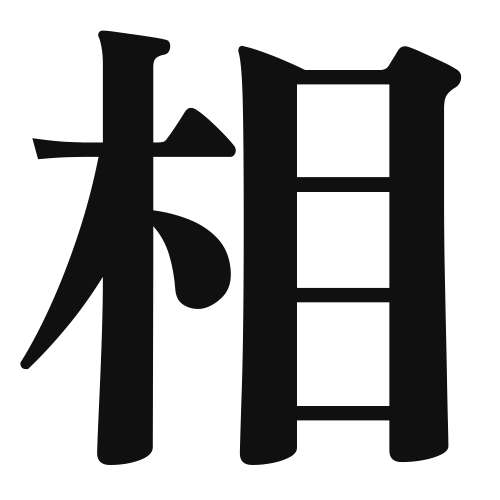1. Overview of Meaning
The kanji “相” (pronounced “sō” or “ai”) generally means “mutual,” “together,” or “each other.” It is often used to express relationships or interactions between people or things.
2. Formation and Radical
Formation of the Kanji: The kanji “相” is a compound character, which means it is formed by combining different elements. It is classified as a 会意文字 (ideogram), where the components convey a combined meaning. The left part represents a person, while the right part suggests a connection or relationship.
Radical: The radical of “相” is “目” (eye), which is often associated with perception and observation, emphasizing the idea of seeing or understanding each other.
3. Examples of Usage
Common Words and Phrases: Some frequently used words that include “相” are:
- 相手 (あいて, aite) – partner, opponent
- 相互 (そうご, sōgo) – mutual, reciprocal
- 相関 (そうかん, sōkan) – correlation
Example Sentences in Daily Conversation:
- 私たちは相手を尊重しなければなりません。
(We must respect each other.) - 相互に助け合うことが大切です。
(It is important to help each other.)
4. Synonyms and Antonyms
Similar Kanji: A similar kanji is “互” (ご, go), which also means “mutual” or “reciprocal,” but it is more focused on the idea of exchange or interaction.
Antonyms: An antonym of “相” could be “孤” (こ, ko), which means “alone” or “isolated,” highlighting the absence of mutuality or connection.
5. Cultural and Historical Background
Relation to Japanese Culture: The concept of “相” is deeply embedded in Japanese culture, emphasizing harmony and relationships in social interactions. It reflects the importance of community and mutual support.
Proverbs and Idioms: One common proverb is “相思相愛” (そうしあい, sōshi ai), which means “mutual love,” often used to describe a deep, reciprocal affection between partners.
